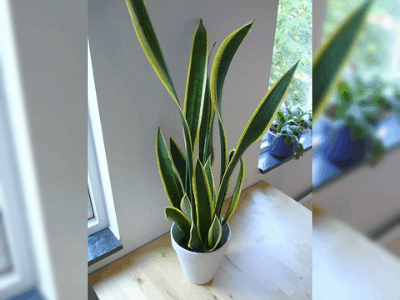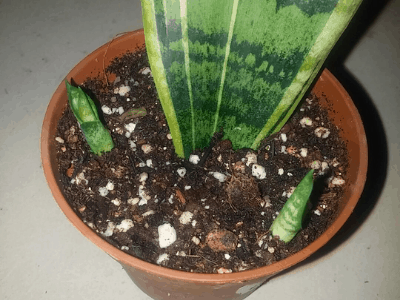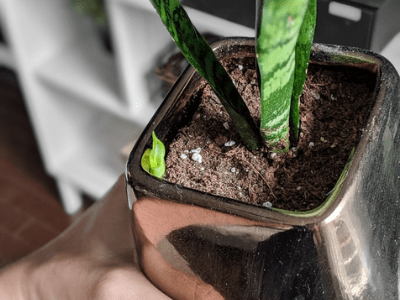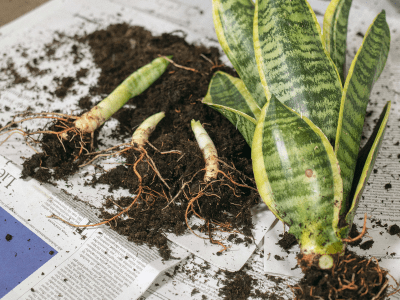
What is a Snake Plant Actually?
What is a Snake Plant Actually?
Of course yes! Its a common houseplant, the Sansevieria trifasciata is native to Asia and Africa.
It can be recognized by its evergreen sword-shaped leaves that grow upright, and almost resemble artificial foliage.
Snake plants are often used as home decor, as they’re pleasing to the eye, easy to care for, and require little water to survive.
hese plants are considered to be relatively safe, but they’re mildly toxic if consumed.
Their leaves contain a poison that can cause swelling and numbness on the tongue if eaten in large doses.
It’s wise to keep this plant away from children and animals that are prone to nibble.
The most common snake plant foliage presents as slender, green leaves with grey or silver horizontal streaks.
This plant can grow several feet tall, and does well in low-light areas.
There are a wide variety of these plants. A few of the more common include:
- Bird’s nest snake plant. Also referred to as the Hahnii, this plant is relatively small, growing to only 6 inches tall. The leaves form clusters that closely resemble a cup, similar to a bird’s nest.
- Cylinder snake plant. The Sansevieria cylindrica has round leaves that can grow several feet in length. The leaves from this plant reach outward to resemble a crown.
- Laurentii Sansevieria. The Laurentii is also a popular snake plant, known for its green-colored center and yellow margins.
Perhaps one of the most popular reasons people include snake plants in their decor is that they’re low maintenance, requiring little attention to grow.
They’re resilient, hardy plants and can survive in relatively dry environments, both indoors and out.
If you plan to have a snake plant in your home, here are a couple of things to keep in mind:
- Don’t overwater. Too much water is this plant’s weakness. Place a snake plant in a well-drained pot to avoid overwatering, as it can cause rotting.
- Only water the soil when it’s completely dry. Indirect sunlight is best.
- Partial sun works best for snake plants. Though, it can still grow in darker corners or in brighter window areas. If completely shaded, the plant can dull and the leaves may become a bit floppy.
Snake plants are proven to be as useful as they are visually appealing.
They can grow indoors and outdoors, with little to no maintenance.
What’s more, snake plants can also help to filter indoor air, an attribute that can keep you safe and healthy.
Consider adding a snake plant to your home for both aesthetic and health reasons.
Well, this plant is one of the famous houseplant that you will ever had. Recognizable and easy to care!
Isn’t that great? The snake plant is native to Africa’s tropical western region, from Nigeria to Congo…
…where she goes by the scientific name Sansevieria trifasciata; however, she goes by a variety of other names.

She is most recognized as “snake plant,” or “mother-in-law’s tongue” because of the shape and the sharpness of her leaves.
In Brazil, they call her “Espada de São Jorge,” because she is associated with the sword of Saint George, and in Japan…
… they call her “Tiger’s tail”. Like all famous people, the snake plant suffered criticism.
She was associated with bad luck. This is just a rumor. In fact, the plant was cherished in ancient times…
..and was believed to bring good luck in several countries.
In China, people who possessed this plant were subject to receiving eight virtue gifts from the Eight Gods…
..which includes Prosperity, Beauty, Long Life, Intelligence, Health, Art, Strength, and Poetry.
This plant will attract positive energy and good luck to your home, giving you a feeling of well-being and a feeling of security.
Here we have story from Kenny about his experience having issue accidentally kill his baby snake plant

A new little leaf guy started to grow from my snake plant, and I was afraid he didn’t have enough room where he was, so I tried putting him in his own pot. But that was, like, months ago, and he is not growing anymore. I guess if he was DEAD I would be able to tell? But he was growing so fast, and now he’s stopped”
Katie Heaney, author from thecut.com
Here’s the main thing…
So, What’s Happen?
Why it stopped growing above the soil is because it’s simply stretching out its roots below the ground.
Just because you don’t see any action above the soil, it doesn’t mean that nothing is happening beneath.
Occasionally my plants suddenly stop growing and out of nowhere, they begin to grow again.
Even if life lies beneath the soil, you cannot see it with the naked eye.

Let’s start from the beginning...
So There’s a Live There? How Can We Help This Dying Plant?
Depending on the plant type, there are different ways of propagating it. In the case of the snake plant…
…I recommend starting it off in water for a while. Due to the fact that snake plants belong to the cactus family…
…they are used to holding a lot of moisture, meaning they don’t need as much water.
That’s fine, but I recommend starting in water first, which is totally okay if you had the hard time cutting the old plant…
…and replanting it in a new pot. In order to get the roots to grow and see if you have indeed propagated…
….successfully, roots should be growing in the water. Whenever you plant in water it is important to make sure…
….that the roots have enough room to grow without touching the bottom.
A cup or jar is perfect for the purpose. The entire thing doesn’t need to be submerged in water.
Then, you need to wait four to six weeks for the roots to start growing.
You’ll see little white sprouts coming from the bottom of the cutting, and this is a good sign…
…that after four to six weeks you can plant it in a pot with fresh soil.
I tried this too a few weeks ago when I was just starting out with plants, I took a Monstera cutting and planted…
….it in some soil and hoped for the best. It did not grow and it wasn’t dead.
A month ago, I couldn’t stand it anymore, so I pulled it from the soil, thinking that I’d throw it out.
This plant had a lot of really long roots, so it was actually growing.
So, what you are experiencing with your plant is that it is growing roots in the soil system…
…but you will not see any growth up top until it has grown a substantial amount of roots.
To bypass the phase when no new roots are growing, you can place the piece in water and it will gradually grow roots.
It’s like building a foundation before the stalk can grow upwards. Additionally snake plants are among…
…the least productive house plants, so I’m so unsatisfied with them! If you let the roots grow one to two inches first…
…you should begin to see growth after four to six weeks after you pot it up.
Some cuttings can take a bit longer or shorter depending on whether or not adequate lighting is being received…
….but that’s generally a rule of thumb. However, you’ll know if a plant is dead by the color of its roots.
If they look mushy and are a dark brown hue rather than a light tan, their roots may have drowned.
I recommend you pull the cutting out of the soil so you can see if there are roots there.
You should always be able to easily see the contrast in colors between a dark soil and tan roots.
You can throw out the plant if it’s dying, but not if there are no roots. If there are no roots, you can put it in water.
Otherwise, you can throw it out. In the end, the first rule of thumb is:
Don’t fix something that’s not broken. Don’t fix anything you aren’t seeing any death in the plant.
Let it do its own thing at its own time.

Sum Up
See having Snake plant is good choice for you to have! It’s cool, its famous, it’s easy to have and care!
What else do you need? In this pandemic time like this, is a good choice for you to have an new activity…
…and having snake plant is a good choice for you to have!
Conclusion
Last thing for sure. This plant need to be care carefully, remember plant need the “love” too.
Alright that’s all for today! Do you have any questions about all of this?
Or do you want to add some good method for caring and having baby snake plant?
Let me know your recommendation from the comment below.
I hope you can now take care your snake carefully and grow it big!
Thanks for reading this article! Bye!

